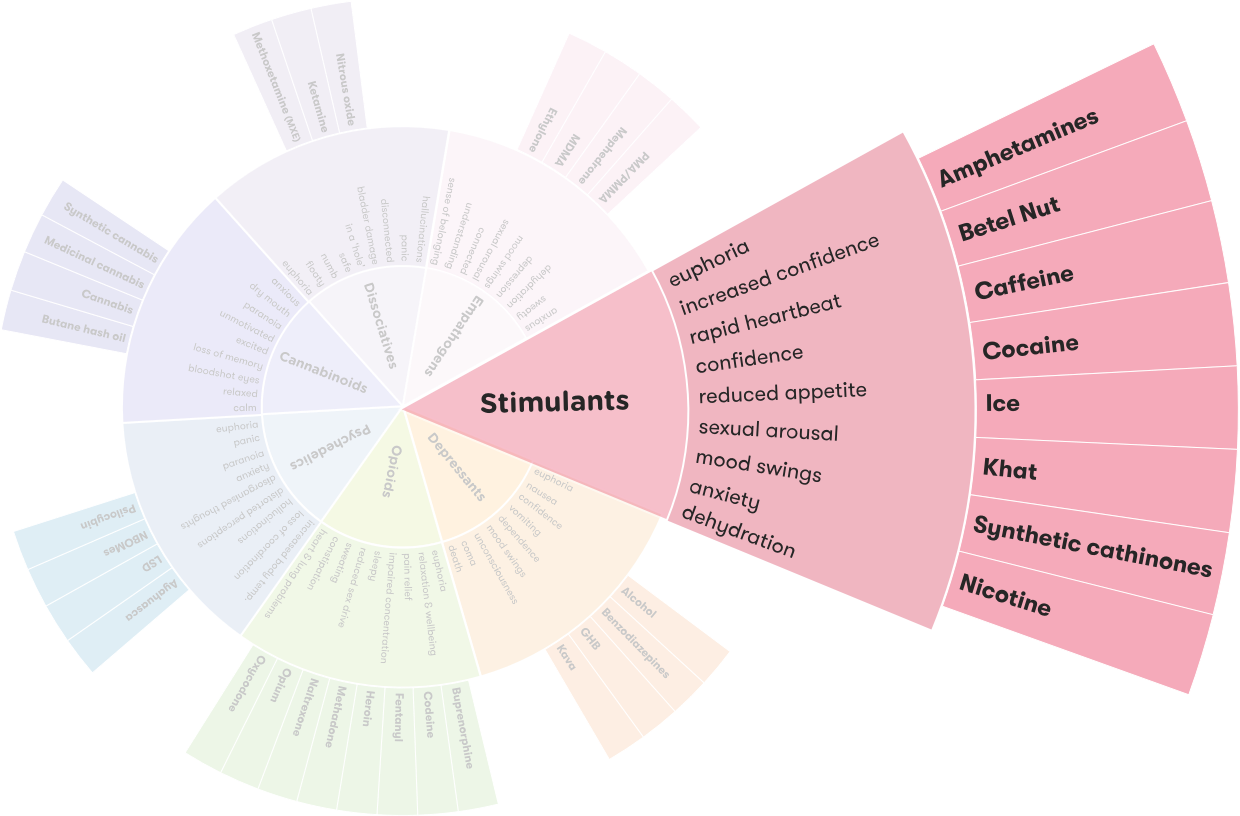Stimulants are drugs that increase alertness, concentration, and energy. They are often prescribed to help people focus and manage ADHD. Stimulants can also be abused, leading to serious mental and physical health problems. Knowing what drugs are classified as stimulants is important to understand the risks associated with their use.
In this article, we will examine what drugs are classified as stimulants, how they work, and their potential risks. We will look at the different stimulant classes, how they are prescribed, and how they can be abused. We will also discuss the common side effects of stimulant use, as well as the potential long-term health risks. Finally, we will explore ways to reduce the risks associated with stimulant use.

Contents
What are Stimulants?
Stimulants are drugs that act on the central nervous system, increasing alertness, energy, and productivity. They are commonly used to treat attention-deficit/hyperactivity disorder (ADHD), narcolepsy, and obesity. Additionally, stimulants are sometimes used to boost athletic performance and to increase concentration in students.
What Drugs Are Classified as Stimulants?
There are many types of stimulants, including both prescription and non-prescription drugs. Prescription stimulants are typically used to treat medical conditions such as attention-deficit/hyperactivity disorder (ADHD), narcolepsy, and obesity. Common prescription stimulants include amphetamines, methylphenidate, and modafinil.
Amphetamines
Amphetamines are a class of synthetic stimulants used to treat ADHD and narcolepsy. They work by increasing levels of dopamine and norepinephrine in the brain, which can improve focus and concentration. Common amphetamines include Adderall, Dexedrine, and Vyvanse. Side effects of amphetamines include insomnia, anxiety, and irritability.
Methylphenidate
Methylphenidate is another common prescription stimulant used to treat ADHD and narcolepsy. It works by blocking the reuptake of dopamine and norepinephrine in the brain, increasing their availability. Common methylphenidate drugs include Ritalin, Concerta, and Daytrana. Side effects of methylphenidate include insomnia, loss of appetite, and irritability.
Modafinil
Modafinil is a prescription stimulant used to treat narcolepsy and shift work sleep disorder. It works by stimulating the release of dopamine and norepinephrine in the brain. Common modafinil drugs include Provigil and Nuvigil. Side effects of modafinil include insomnia, headaches, and nausea.
Non-Prescription Stimulants
Non-prescription stimulants, sometimes referred to as “energy supplements” or “energy boosters,” are widely available over-the-counter. These drugs contain ingredients such as caffeine, guarana, and green tea extract. They are often marketed as “natural” alternatives to prescription stimulants, but can have similar effects on the body. Common non-prescription stimulants include Red Bull, Monster, and 5-Hour Energy. Side effects of non-prescription stimulants include insomnia, headaches, and irritability.
Frequently Asked Questions About Stimulant Drugs
Stimulants are a class of drugs that can increase alertness, attention, and energy. These drugs can be prescribed to treat certain medical conditions, but they can also be abused and can lead to addiction. Read on to learn more about stimulant drugs.
What Are Stimulant Drugs?
Stimulants are a class of drugs that can increase alertness, attention, and energy. These drugs act on the central nervous system and can temporarily increase alertness, focus, and concentration. Stimulant drugs are commonly prescribed to treat medical conditions such as attention deficit hyperactivity disorder (ADHD), narcolepsy, and depression. Examples of stimulant drugs include amphetamines, methylphenidate, and cocaine.
However, when used without a prescription or in higher doses than prescribed, stimulants can be addictive and have dangerous side effects. Stimulant drugs can be abused in several ways, including snorting, injecting, smoking, or swallowing.
What Are the Effects of Stimulant Drugs?
The effects of stimulant drugs depend on the type of drug, the dose, and the method of use. Common effects of stimulants include increased alertness, increased energy, increased focus, increased heart rate, increased blood pressure, and increased breathing rate.
Stimulant drugs can also produce feelings of euphoria and a false sense of wellbeing. This can lead to misuse and addiction. When taken in higher doses than prescribed, stimulant drugs can cause dangerous side effects such as seizures, stroke, and cardiac arrest.
Are Stimulant Drugs Addictive?
Yes, stimulant drugs are highly addictive. The risk of addiction is increased when the drugs are abused or taken in higher doses than prescribed. People who are addicted to stimulant drugs often experience intense cravings for the drug and will continue to use it despite the risks.
Additionally, people who are addicted to stimulant drugs can experience withdrawal symptoms when they try to quit. Withdrawal symptoms can include fatigue, depression, and intense cravings for the drug.
How Is Stimulant Addiction Treated?
Stimulant addiction is usually treated with a combination of medication and counseling. Medication can help reduce cravings and withdrawal symptoms, while counseling can help the person understand why they started using stimulant drugs and how to avoid relapse.
It is important to find an addiction treatment program that is tailored to the individual. Treatment programs should include evidence-based treatments such as cognitive behavioral therapy, motivational interviewing, and contingency management.
What Are Some Ways to Prevent Stimulant Addiction?
The best way to prevent stimulant addiction is to avoid using these drugs in the first place. If you are prescribed stimulant drugs, make sure to take them exactly as your doctor has prescribed and only use them for the prescribed amount of time.
It is also important to educate yourself on the risks of stimulant drugs and to be aware of the signs of addiction. If you or someone you know is using stimulant drugs, it is important to seek help right away.
Psychoactive drugs: Stimulants | Processing the Environment | MCAT | Khan Academy
In conclusion, drugs classified as stimulants have been used throughout history to increase alertness, focus, and energy. Stimulants may have benefits for some people with certain medical conditions, but they can also be abused and are potentially dangerous. People should always consult a healthcare professional before taking any stimulant medication and should be aware of the potential risks associated with them. Stimulants can be a helpful tool for those who need them, but they should be used with caution and care.
